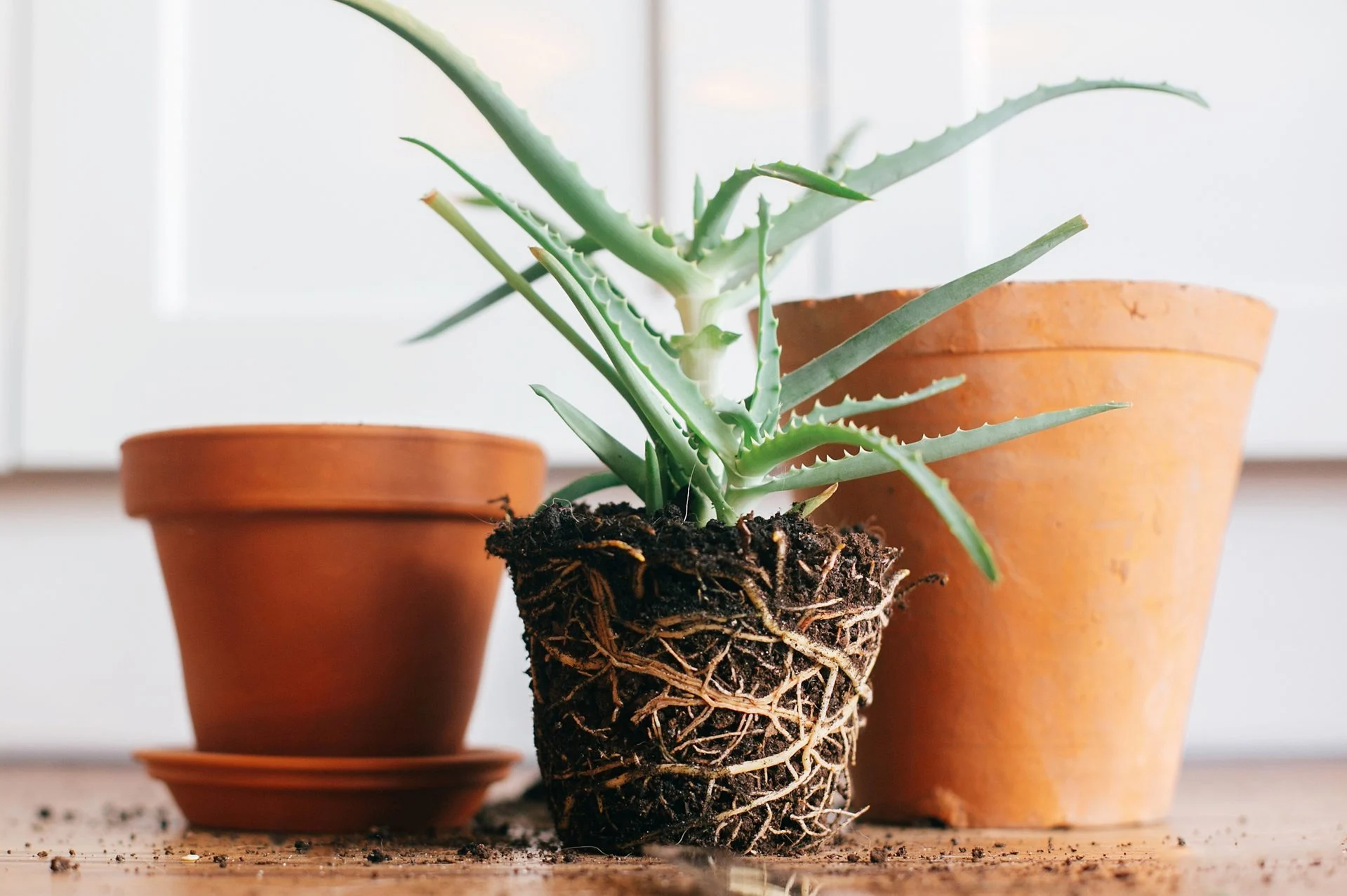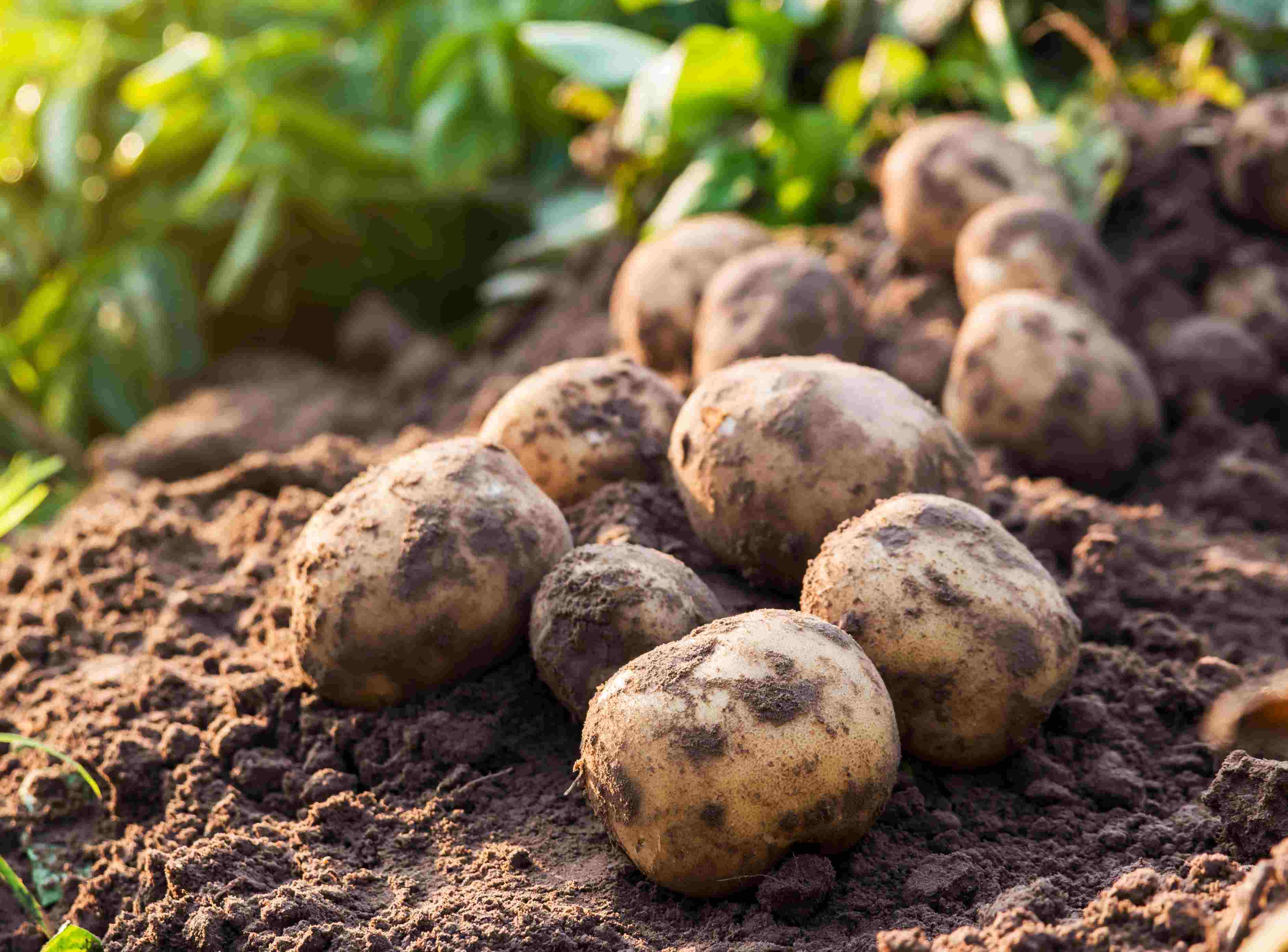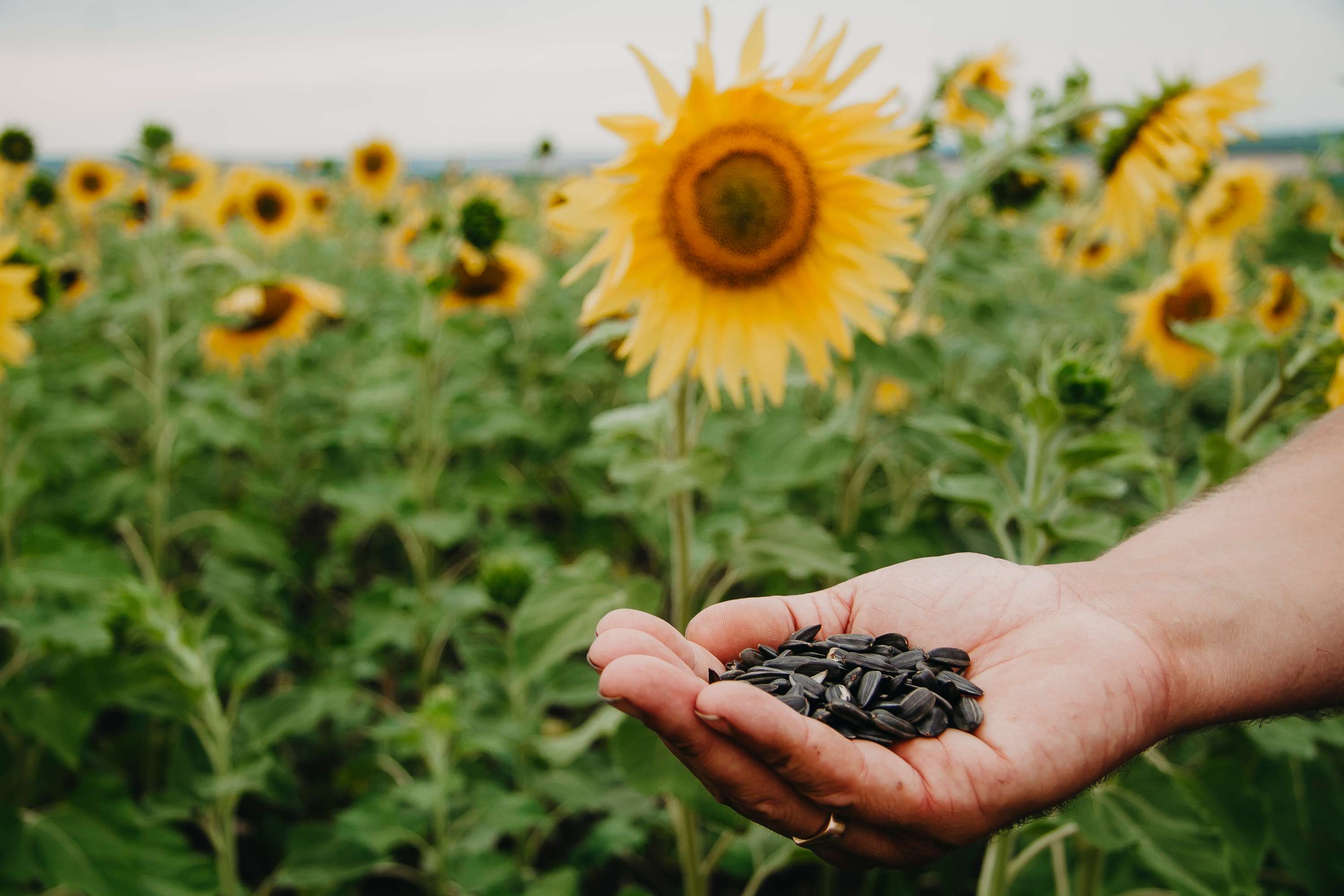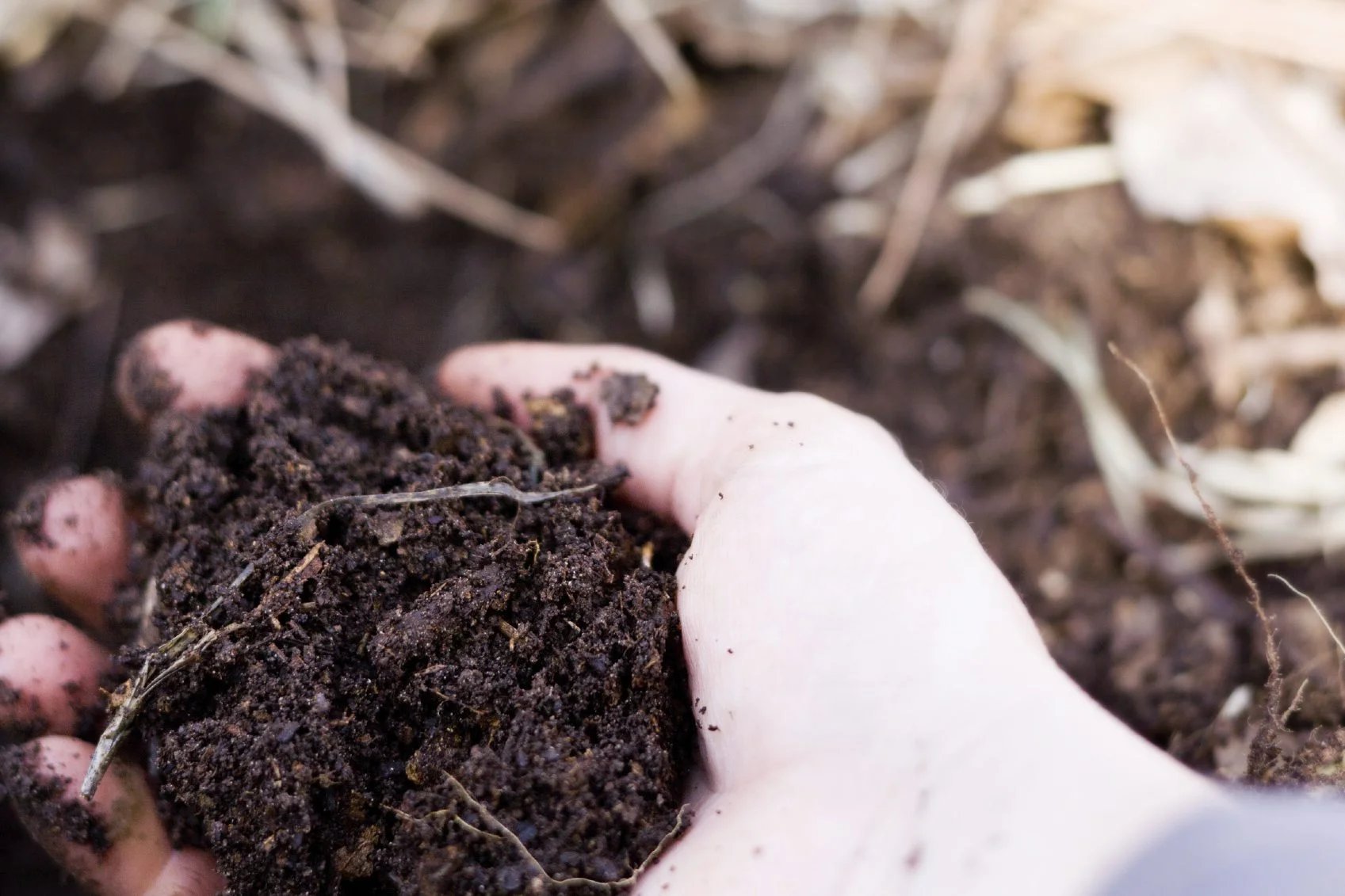Home>Types of Gardening>Edible Gardening>How To Store Aquarium Plants Before Planting


Edible Gardening
How To Store Aquarium Plants Before Planting
Modified: January 22, 2024
Learn how to store aquarium plants before planting them in your edible garden. Discover useful tips and techniques to ensure their health and successful growth.
(Many of the links in this article redirect to a specific reviewed product. Your purchase of these products through affiliate links helps to generate commission for Chicagolandgardening.com, at no extra cost. Learn more)
Table of Contents
- Introduction
- Importance of Properly Storing Aquarium Plants
- Preparing Plants for Storage
- Choosing the Right Storage Method
- Storing Aquarium Plants in Water
- Storing Aquarium Plants in Substrate
- Storing Aquarium Plants in Containers
- Monitoring and Maintenance During Storage
- Preparing Plants for Planting
- Conclusion
Introduction
Welcome to the world of edible gardening, where you can grow your own fresh and nutritious fruits, vegetables, and herbs right in your backyard! Edible gardening has gained popularity in recent years as more people seek to reconnect with nature and enjoy the benefits of homegrown produce. Not only does it provide a rewarding and satisfying experience, but it also allows you to have complete control over what goes into your food.
Whether you have a spacious garden or a small balcony, edible gardening is a versatile and accessible hobby that can be enjoyed by people of all skill levels. No matter the size of your space, there are plenty of edible plants that can be grown successfully, from tomatoes and lettuce to herbs like basil and mint.
In this comprehensive guide, we will delve into the world of edible gardening and explore the different aspects that will help you create a successful and bountiful garden. From choosing the right plants to understanding the soil, water, and sunlight requirements, we will cover everything you need to know to get started.
Furthermore, we will dive into the various techniques and tips that will help you maintain a healthy garden and prevent common pests and diseases. We will also explore sustainable gardening practices, such as composting and companion planting, which can enhance the productivity of your garden while minimizing environmental impact.
So, whether you are a beginner taking your first steps into the world of edible gardening or an experienced gardener looking to expand your knowledge, this guide is here to support and inspire you on your journey. Get ready to roll up your sleeves, dig your hands into the soil, and reap the rewards of your own edible garden!
Importance of Properly Storing Aquarium Plants
When it comes to setting up a vibrant and thriving aquarium, the quality and health of the plants are just as crucial as the well-being of the fish. Properly storing aquarium plants before planting is key to ensuring their survival and preventing any negative impact on the aquatic ecosystem. Here are the reasons why proper storage is so important:
- Preserve Plant Health: Aquarium plants, like any other living organism, require specific conditions to thrive. By storing them properly, you create an environment that mimics their natural habitat and keeps them healthy and robust.
- Prevent Contamination: Aquarium plants can harbor pests, diseases, and unwanted algae. Storing them separately from your main aquarium prevents the spread of these issues, protecting your existing fish and providing a clean and sterile environment for the plants to recover.
- Adaptation Period: Transitioning from a nursery or supplier to your aquarium can be a shock for plants. Proper storage allows them to acclimate gradually, reducing the stress they experience and increasing their chances of survival post-planting.
- Planning and Design: Storing aquarium plants before planting gives you the time and freedom to plan and design your aquascape. You can experiment with different layouts, rearrange plants, and even quarantine specific species to create the desired aesthetic effect.
- Flexibility in Timing: Sometimes, you may not be ready to plant the aquarium right away. Proper storage ensures that the plants remain healthy and vibrant until you are ready to introduce them to the aquarium, without compromising their quality or vitality.
By acknowledging the importance of properly storing aquarium plants, you set the stage for a successful and visually stunning aquarium. Taking the time and effort to provide the optimal storage conditions is a small investment that pays off in the long run, ensuring that your aquatic plants thrive and contribute to a balanced and breathtaking underwater environment.
Preparing Plants for Storage
Properly preparing your aquarium plants for storage is crucial to ensure their health and vitality during the storage period. Follow these steps to prepare your plants for storage:
- Inspect and Trim: Before storing your aquarium plants, carefully inspect them for any signs of pests, diseases, or damaged leaves. If you notice any issues, trim the affected parts using clean and sharp scissors or pruning shears to promote healthy growth.
- Gently Clean: It’s essential to clean the plants to remove any debris, algae, or unwanted hitchhikers. Rinse them under running water, gently swishing them to dislodge any dirt or debris. Avoid using soap or detergents, as they can be harmful to aquatic life.
- Quarantine if Necessary: If you suspect that any of the plants may harbor pests or diseases, consider isolating them in a separate container for observation before storing them with the rest of your plants. This precautionary measure helps prevent the potential spread of issues to your main aquarium.
- Trim Roots (if applicable): Some plants, like potted aquarium plants, may have long or overgrown roots. Trimming the roots to a manageable length not only helps with storage but also promotes healthy root development after planting.
- Keep Plants in Optimal Condition: Ensure that the plants are in their best condition before storage. They should be well-nourished, adequately hydrated, and free from any deficiencies. This will enable them to withstand the storage period without significant stress.
By taking the time to properly prepare your aquarium plants for storage, you set them up for a smoother transition and increase their chances of thriving once they are planted. This simple yet important step ensures that your plants remain healthy, vibrant, and resilient throughout the storage period.
Choosing the Right Storage Method
When it comes to storing aquarium plants, choosing the right storage method is vital to maintain their health and ensure their successful transition to the aquarium. Here are some commonly used storage methods along with their benefits:
- Storing Aquarium Plants in Water: This method involves storing the plants in a container filled with water. It is suitable for most aquarium plants, especially those with delicate or fine roots. Submerging the plants mimics their natural aquatic environment and helps keep them hydrated. Ensure that the water is free from chlorine by using dechlorinated tap water or aged aquarium water, and change the water regularly to prevent the buildup of toxins.
- Storing Aquarium Plants in Substrate: Another popular method is storing the plants in a substrate, such as damp sand, gravel, or vermiculite. This method allows the plants to absorb moisture and nutrients from the substrate, promoting root growth and activity. Make sure the substrate is moist but not overly wet to avoid rotting the plant’s roots. Regularly check the moisture level and mist the substrate when needed.
- Storing Aquarium Plants in Containers: If you prefer a more controlled environment, consider storing the plants in dedicated containers, such as plastic bags or Tupperware containers. Place the plants inside the containers with damp paper towels or moss to provide moisture and prevent dehydration. Seal the containers to maintain humidity and periodically open them to allow fresh air circulation.
When choosing the storage method, consider the specific needs of your aquarium plants and the duration of storage. Some plants may thrive better in water, while others prefer a substrate-based storage method. Additionally, the storage location should have appropriate lighting conditions, preferably indirect light to avoid excessive growth or algae issues.
Remember to monitor the plants regularly while they are in storage. Check for any signs of distress, such as wilting, discoloration, or pest infestation. Adjust the storage conditions accordingly to ensure the plants remain healthy and ready for planting when the time comes.
Storing Aquarium Plants in Water
Storing aquarium plants in water is a common and effective method to maintain their health and vitality during the storage period. This method mimics the plants’ natural aquatic environment and provides them with the necessary hydration. Here’s how to store your aquarium plants in water:
- Select a Suitable Container: Choose a clean and non-toxic container that is large enough to accommodate the plants. Glass or plastic containers work well. Avoid containers with lids or airtight seals, as they can limit oxygen exchange.
- Fill the Container with Water: Fill the container with dechlorinated tap water or aged aquarium water. Chlorine and other harmful chemicals in tap water can be detrimental to the plants. If using tap water, treat it with a water conditioner to remove chlorine and other additives.
- Prepare the Plants: Gently remove the plants from their original pots or containers. Rinse off any loose substrate or debris from the roots. Trim any damaged or overly long roots and remove any decaying leaves or stems.
- Submerge the Plants: Place the plants into the container, ensuring that the roots are fully submerged in the water. Avoid overcrowding the container to allow proper air and water circulation.
- Monitor Water Quality: Regularly check the water quality to ensure it remains clean and free from contaminants. Perform water changes as needed to maintain optimal conditions. If the water becomes cloudy or foul-smelling, it may indicate the presence of bacterial or algae growth, and a partial water change is recommended.
- Provide Adequate Lighting: Place the container in a location with indirect light. Avoid direct sunlight, as it can lead to excessive algae growth. Adequate lighting encourages photosynthesis and keeps the plants healthy during storage.
During the storage period, monitor the plants regularly for any signs of distress, such as wilting or decaying leaves. Remove any dead or dying plant material to prevent the spread of decay. If necessary, you can add a small amount of liquid fertilizer to the water to provide essential nutrients for the plants.
Storing aquarium plants in water is an effective method to keep them healthy and hydrated. With proper care and maintenance, your plants will remain vibrant and ready for planting when the time comes.
Storing Aquarium Plants in Substrate
Storing aquarium plants in substrate is a popular method that allows them to absorb moisture and nutrients from the substrate during the storage period. This method promotes root growth and keeps the plants healthy and prepared for planting. Here is how to store your aquarium plants in substrate:
- Select a Suitable Substrate: Choose a substrate that retains moisture well, such as damp sand, gravel, or vermiculite. Avoid using substrates that are too dense or compact, as they can suffocate the plant roots.
- Moisten the Substrate: Dampen the chosen substrate by adding a small amount of water and mixing it thoroughly. The substrate should be moist but not overly wet to prevent root rot or mold formation.
- Prepare the Plants: Remove the plants from their original pots or containers. Gently rinse off any loose substrate or debris from the roots. Trim any damaged or excessively long roots and remove any decaying leaves or stems.
- Plant in the Substrate: Place the plants in the damp substrate, ensuring that the roots are fully embedded. Arrange them spaciously to avoid overcrowding, allowing proper air and moisture circulation.
- Maintain Moisture Levels: Regularly check the moisture level of the substrate and mist it with water as needed to maintain a consistent level of moisture. Avoid overwatering, as excess water can lead to root rot. The substrate should be damp but not saturated.
- Provide Adequate Lighting: Place the substrate container in a location with indirect light. This will provide the plants with the necessary light for photosynthesis while avoiding excessive growth of algae.
During the storage period, monitor the plants for any signs of distress, such as yellowing or browning of leaves. Remove any decaying or dead plant material promptly to prevent the spread of rot or pests. If necessary, provide a small amount of liquid fertilizer or root stimulator to the substrate to nourish the plants. However, be cautious not to over-fertilize, as it can lead to nutrient imbalances.
Storing aquarium plants in substrate ensures that they are supplied with moisture and nutrients, promoting root development and overall health. With proper care and attention, your plants will be ready for planting and contribute to a thriving aquascape when the time comes.
Storing Aquarium Plants in Containers
Storing aquarium plants in containers is a flexible and controlled method that allows you to create a customized storage environment for your plants. This method is particularly useful when you want to quarantine certain plants or create specific conditions for individual species. Here is how to store your aquarium plants in containers:
- Select Suitable Containers: Choose clean, clear plastic bags or containers with lids that provide airtight or semi-airtight seals. The containers should be large enough to comfortably accommodate the plants and allow for adequate air and moisture circulation.
- Prepare the Containers: Thoroughly clean and dry the containers before use to minimize the risk of contamination. Line the bottom of the containers with a layer of damp paper towels or moist sphagnum moss to provide moisture and humidity.
- Prepare the Plants: Remove the plants from their original pots or containers. Gently rinse off any loose substrate or debris from the roots. Trim any damaged or excessively long roots and remove any decaying leaves or stems.
- Place Plants in Containers: Carefully place the prepared plants into the containers, making sure the roots are covered with the damp paper towels or moss. Avoid overcrowding the containers to allow air and moisture to circulate freely.
- Seal the Containers: Close the containers and ensure they are sealed properly to provide a semi-airtight environment. This helps maintain humidity and prevents excessive moisture loss. However, it is essential to periodically open the containers to allow fresh air exchange.
- Monitor and Maintain: Regularly check the containers for any signs of excess moisture, mold, or pests. Remove any decaying plant parts or pests promptly. Adjust the humidity level and the amount of moisture in the containers as needed.
It is crucial to monitor the plants closely during storage, especially in a container environment. Check for any signs of stress, such as wilting leaves or discoloration, and adjust the storage conditions accordingly. If necessary, provide a small amount of liquid fertilizer or root stimulator to ensure the plants receive essential nutrients while in storage.
Storing aquarium plants in containers allows flexibility in creating customized storage conditions. It is an ideal method for quarantine, specialized care, or individual plant needs. By closely monitoring and maintaining the containers, you can ensure that your plants remain healthy and ready for planting when the time comes.
Monitoring and Maintenance During Storage
Proper monitoring and maintenance are essential during the storage of aquarium plants to ensure their health and readiness for planting. Regular observation and care will help identify any issues and prevent the deterioration of the stored plants. Here are some key aspects to consider:
- Regular Inspection: Check the stored plants regularly, preferably every few days, for any signs of distress, such as wilting, yellowing leaves, or pest infestations. Early detection allows prompt action and prevents the spread of issues.
- Moisture Level: Monitor the moisture level in the storage method you have chosen. Whether it’s water, substrate, or a container, ensure that the plants are neither too dry nor overly saturated. Adjust moisture levels as needed to maintain optimal hydration for the plants.
- Lighting Conditions: Consider the lighting requirements for the stored plants. While indirect light is generally sufficient, monitor the intensity and duration of light exposure to prevent excessive growth or the development of algae problems.
- Temperature Control: Maintain a suitable temperature for the stored plants. Most aquarium plants thrive in temperatures between 72-82°F (22-28°C). Avoid extreme temperature fluctuations or prolonged exposure to high or low temperatures.
- Remove Decaying Matter: Regularly inspect and remove any decaying leaves, stems, or roots from the stored plants. Decaying organic matter can release toxins and invite pests, affecting the overall health of the plants.
- Pest Prevention: Stay vigilant for any signs of pests, such as insects or snails, in the storage area. If detected, take immediate action to prevent the infestation from spreading to other plants or the aquarium.
- Fertilization (if necessary): Depending on the duration of storage and the specific needs of the plants, consider providing a small amount of liquid fertilizer or root stimulator to keep the plants nourished. However, exercise caution not to over-fertilize, as it can lead to nutrient imbalances.
By consistently monitoring and maintaining the stored plants, you can address any issues promptly and ensure their overall health and readiness for planting. Remember to document any changes in their condition or growth patterns, as it can provide valuable insights for future reference and care.
Preparing Plants for Planting
Before planting your aquarium plants, it is crucial to prepare them properly to ensure successful establishment in your aquarium. Taking the time to prepare the plants will promote healthy growth and enhance their ability to thrive in their new aquatic environment. Here are the steps to prepare your plants for planting:
- Remove from Storage: Carefully remove the plants from the storage method, whether it’s water, substrate, or containers. Take extra care to avoid damaging the roots or stems during this process.
- Gently Rinse: Rinse the plants under running water to remove any residual substrate, debris, or excess fertilizer from the storage period. Be gentle to avoid damaging the delicate foliage or roots.
- Trim and Prune: Inspect the plants for any damaged or unhealthy leaves or stems. Trim them using sterilized scissors or pruning shears to encourage new growth and maintain the overall health of the plants.
- Separate Root Clumps: If the plants were stored together and their roots have become entangled, carefully separate the root clumps using your fingers or a gentle shaking motion. This will allow the plants to establish their roots individually.
- Aquascape Design: Plan your aquascape design and determine the placement of each plant in the aquarium. Consider the plants’ specific needs, growth habits, and lighting requirements when deciding on their positions.
- Planting Depth: Dig small holes or depressions in the substrate to plant each plant. Adjust the planting depth according to the specific requirements of each species. Check that the plants’ roots are well-covered without burying the stems.
- Anchor if Necessary: For plants that require anchoring, such as epiphytes or carpeting plants, secure them to driftwood, rocks, or anchor points in the substrate using aquarium-safe glue, thread, or plant weights.
- Fill the Aquarium: Fill your aquarium with dechlorinated water. Take care to prevent disruptions or disturbances to the newly planted plants during the filling process.
- Provide Proper Lighting and Nutrition: Ensure that your aquarium lights are suitable for the specific needs of the plants. Consider using a high-quality aquarium fertilizer or a nutrient-rich substrate to provide the necessary nutrients for optimal plant growth.
Once you have prepared and planted your aquarium plants, closely monitor their progress in the following weeks. Look out for any signs of nutrient deficiencies, algae growth, or melting of leaves. Make any necessary adjustments to the lighting, fertilization, or other environmental factors to support their healthy growth.
By taking the time to properly prepare the plants for planting, you give them the best possible start in your aquarium, leading to vibrant and thriving aquatic vegetation.
Conclusion
Edible gardening is an incredibly rewarding and fulfilling endeavor that allows you to grow your own fresh and nutritious produce. Whether you are a beginner or an experienced gardener, the world of edible gardening offers a wealth of possibilities and benefits.
In this comprehensive guide, we have explored the various aspects of edible gardening, from choosing the right plants to understanding the importance of soil, water, and sunlight. We have also discussed techniques such as composting and companion planting, which can enhance the productivity and sustainability of your garden.
Properly storing aquarium plants before planting is essential to ensure their health and vitality. By selecting the appropriate storage method, preparing the plants, and monitoring their well-being, you can create a smooth transition and promote successful growth in your aquarium.
As you embark on your edible gardening journey, remember to be creative and experiment with different techniques. Embrace the joy of getting your hands dirty, connecting with nature, and witnessing the transformation of tiny seeds into flourishing plants.
Whether you have a sprawling backyard or a small balcony, edible gardening provides an opportunity to reconnect with the earth, nurture life, and enjoy the incredible flavors of homegrown produce. So, roll up your sleeves, grab your gardening tools, and embark on the wonderful journey of edible gardening today!










